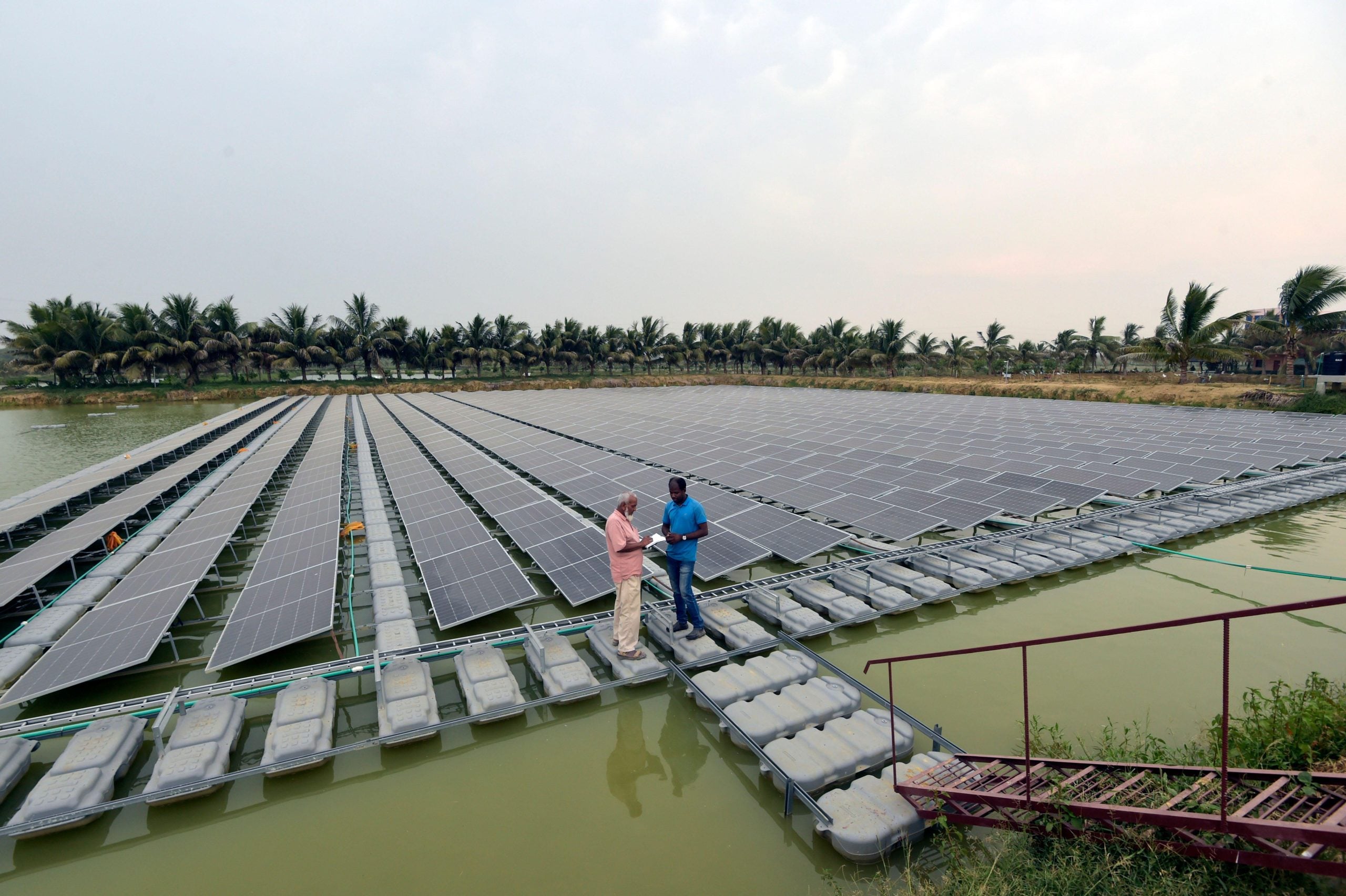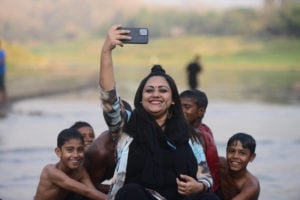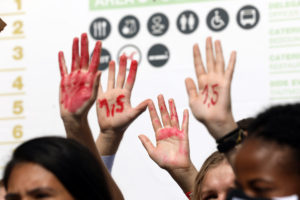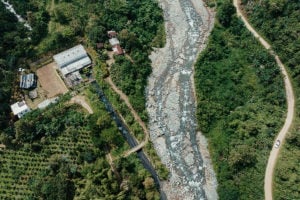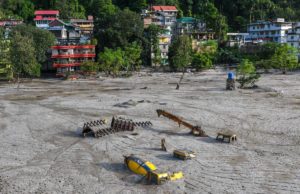In 2021, Bangladesh unveiled a national climate action framework, the Mujib Climate Prosperity Plan. Named after the country’s founding father and former president Sheikh Mujibur Rahman, it was presented by his daughter, prime minister Sheikh Hasina, at the Glasgow climate summit COP26. This was during her second tenure as president of the Climate Vulnerable Forum.
The Mujib Climate Prosperity Plan aims to deliver robust socio-economic development while maximising green opportunities and Bangladesh’s resilience to climate change. Among its stated aims are the elimination of extreme poverty and climate change-induced migration by 2030; new climate-resilient jobs totalling 4.1 million; cleaner air and improved mobility; and “net savings or avoided losses” worth at least USD 30 billion per year by 2030.
To better understand the intricacies of this initiative and what has been achieved in the almost two years since its launch, The Third Pole spoke with Saber Hossain Chowdhury, a Bangladeshi Member of Parliament and, since he was appointed in June, the prime minister’s Special Envoy on Climate Change. Chowdhury talks about the plan’s priorities, the challenges it has faced, and its potential to transform Bangladesh’s climate landscape. The conversation has been edited for length and clarity.
The Third Pole: What exactly is the Mujib Climate Prosperity Plan (MCPP)?
Saber Hossain Chowdhury: Climate change is a big challenge for us, with implications for our economy. The World Bank says we will lose 2% of GDP by 2050 and 9% [by 2100] if mitigation measures are not increased, due to climate change. This is a difficult situation to overcome.
[But] with the Mujib Climate Prosperity Plan, we are trying to change our perspective and ask ourselves: how can we recover from this loss and move towards prosperity? We don’t want everything to stop at loss and damage alone. That’s why this plan has everything: it covers adaptation, mitigation, and loss and damage. We will use our local knowledge and blend that with international best practices to deal with such factors.
Bangladesh contributes less than 0.5% of global emissions. Yet we are doing mitigation. [This is because] we see it as a means of increasing employment, attracting investment and reducing fuel costs.
We want to strengthen employment in our green economy, protecting workers and businesses from the harms of climate change by greatly increasing the level of protection [for them]. On top of that would be generating more aggregate employment than economic targets. This would be done through strategic green jobs growth, lowering unemployment, and ensuring upskilling of the workforce to high-quality green tech jobs. By reducing the use of fossil fuels and using renewable energy, we will be able to reduce fuel costs.
In the last fiscal year, the Bangladesh government allocated USD 2.96 billion (0.73 percent of the GDP) for 25 ministries to create initiatives that tackle climate change impacts. We could have spent that money on health, education, employment, and the construction of roads, [because] food, shelter, clothing, education and medical treatment are constitutional rights. But the impact of climate change is leading us to deny those rights and forcing us to spend money on mitigation and adaptation. We’ve allocated money for climate adaptation [actions] like heat and salt-tolerant paddy production, building more shelters and emergency food supply during floods and other disasters.
The Third Pole: Which issues does the Mujib climate plan prioritise and how will these be tackled practically?
Chowdhury: The plan is focused mainly on eradicating poverty and achieving economic and social wellbeing for everyone. This will be achieved through a climate change strategy that’s focused on the less well-off, which prioritises adaptation and disaster risk reduction, and also addresses carbon emissions, technology transfer and the provision of adequate finance. With international and other investment support, we hope to have 30% [of all energy be] renewable by 2030 and up to 40% by 2041, and [achieve] grid resilience and modernisation. This would attract investment in Bangladesh from the world’s big companies.
Technology transfer is the dissemination of designs, inventions, software or technical knowledge from one organisation to another in order to turn inventions and scientific findings into usable products and services.
Regarding jobs, [we will] markedly increase protective measures against rising workplace heat that exposes indoor and outdoor workers to severe health and productivity risks. We plan to increase protections for workers and businesses who confront the impacts of climate change, such as rising heat and the resultant health risks.
The Third Pole: The big challenge is financing. How does the government plan to address this?
Chowdhury: Financing is one of our biggest challenges. Developing a [financing] plan is one thing, but how to implement it is a matter of concern.
We will need an investment of USD 80 billion to implement the [Mujib climate] plan. However, managing [to source] an additional USD 80 billion is not possible for Bangladesh [alone]. It will be better if it comes through public-private partnership or direct foreign investment.
As mentioned in the MCPP, [we will seek to] strengthen economic partnerships [through] investment and trade, with climate considerations, with North-South, South-South, regional and international cooperation. The Plan aims to increase domestic private investment and foreign direct investment. These can be boosted by improving [Bangladesh’s] investment landscape, with a view to reducing the cost of doing business and providing access to serviced land [that is ready for development] through establishing special economic zones.
Strengthening of economic partnerships is to be supported through marketing campaigns, publicising projects, and hosting annual investor conferences with a range of capital providers, international institutions and bilateral partners.
The Plan will drive climate resilience, adaptation, and low carbon development demand from bilateral, multilateral, and commercial investors. These plans can serve as a negotiating tool to enable a climate trade that leads to robust competition with partners, including strengthened economic partnerships with countries aligned with safeguarding the 1.5C limit of the Paris Agreement. Concurrently, there will be a reduction in the volume of trade with countries that are not aligned with climate prosperity outcomes as a result of reduced fossil fuel imports.
There is significant opportunity for technology-transfer partnerships and building manufacturing capacity in Bangladesh. Partnerships in adaptation technology may be pursued in areas such as flood safeguards, weather forecasting technologies, insurance tools, more resilient crops, water recycling, water purification, efficient irrigation systems, and sensors, especially for flood zones.
The Third Pole: Has the Mujib Climate Prosperity Plan been successful so far?
Chowdhury: As this is a new initiative, it will take some time to roll on as the idea is new and interrelated with a number of other national priorities. We are expecting that the projects under the MCPP [such as sustainable agriculture] will start in full swing from February or March next year. It will be implemented step by step and will be updated from time to time. It will undergo a midterm review in 2025.
A good example of [an upcoming] sustainable agriculture [project] is seaweed cultivation, with its climate resilience and development benefits. It is a low or even negative carbon industry, resilient to climate shocks, does not require significant capital to be established, is export-focused, and offers a variety of forms of employment. As Bangladesh has a large suitable continental shelf already identified around Cox’s Bazaar [in the south-east] and the coast south of Khulna, seaweed pilot schemes should be explored based upon marketing partnerships with international purchasers and global best practices for cultivation. Once established, these pilot schemes will form the basis of a growing and profitable local industry.
We want to be climate adaptation leaders, rather than victims
So far, we have passed a law in parliament [the Renewable Energy Policy of 2008] to ensure 10% of the national energy supply comes from renewables. Unfortunately, we could not achieve that; we have only been able to reach 2%-2.5% due to a lack of awareness [surrounding the law] and monitoring. [Currently,] we have one million irrigation pumps in our country which are powered by diesel. If we can use solar power in those, we will be able to generate 5,000 megawatts of electricity. 1,523 solar irrigation pumps have been installed, with a cumulative capacity of 42.08 MWp [megawatt peak, a measure of the maximum potential output of power]. The target is 10,000 solar pumps by 2050. We also plan to install floating solar panels. This has huge potential.
The MCPP has developed a global appeal. After we launched the programme, Sri Lanka and Ghana followed in our footsteps and are working on similar ones. We want to be [climate adaptation] leaders, rather than victims.
The Third Pole: Have there been any challenges?
Chowdhury: Our challenge [has been] to understand [where we can be competitive] and attract investors. For investors, Bangladesh is not the only option – the whole world is open to investment. If any investor wants to invest in Bangladesh, they will first look across South Asia and only then [will they] pick a country to do business with. Many countries in the region, like India or Sri Lanka, also need foreign investment and are also doing their part to draw the attention of potential investors.
Unless we offer investors the best business environment, they will never come to Bangladesh. This is not easy. We need to integrate our plans; all our development plans need to be integrated with the National Adaptation Plan and the Energy and Power Master Plan. It is a big challenge. After graduating from the status of LDC [least developed country, which is scheduled for 2026], there will be more new challenges.


